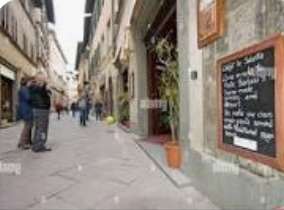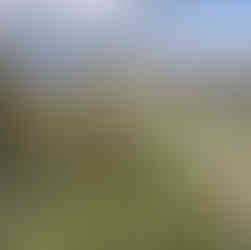Travel:Cortona, Hilltop Town , Tuscany, Italy. March 12-14/2025
- Lili Naveh
- Mar 13
- 8 min read
Updated: 1 day ago
A continuation of a trip which started on March 12th, a layover week, on the way to Israel.
Orvieto - 3/11-12 (here)

Upon departing Orvieto, Umbria late afternoon, the weather seemed to clear-out and brightened up, thus, the hour an a half drive on the mountainous scenic side road ( S71) was fabulous


Sites on the way
Verdant mountainous vineyards , beautiful valleys' sights and then down by lake .
were most enjoyable sights. Later however the weather reverted back to cloudy grey and trickling but didn't deter from walking and exploring.
Cortona -an Etruscan Hilltop town

Immersed in a small valley surrounded by splendid hills
Cortona- one of the most delightful medieval hilltop towns at an elevation of 600 m (2,000 ft) is situated in the province of Arezzo, in Tuscany, 30 km south of Arezzo Town. (underrated Arezzo is definitely another worth town to visit when in the area)
Cortona was founded by the Etruscan, colonized by the Romans, and, after its sale to the Florentines in 1409, thrived under the Grand Duchy of Tuscany
The town of about 21,500 inhabitants, is perched majestically on a ridge of Monte Sant’Egidio, which dominates the tectonic valley Val di Chiana. below, offering splendid panoramic views of its plains around Cortona..
The valley's floor consists of important alluvial residues filled up since the 11th c

The approach road to the town's lofty setting, winds through terraced olive groves and vineyards, past old villas, farms, and monasteries.
The surrounding countryside is also dotted with sections of ancient walls, old structures and ceremonial ancient tombs. Parts of the Etruscan city wall can still be seen today as the basis of the present wall.

The town is not complicated to explore but requires energy and good shape to walk up and down its narrow steep allies and rows of stairs. which are dotted with quaint inns and many restaurants,
Cortona is a tourism hot-spot and is the main cultural artistic center.
If interested in group guided English tours , the city doesn't offers that to the public , but the tourist info office on Piazza Signorelli offers the following guides for private tours:
Valerie Lorenzini. - 32-84744506
Laura Gremoli. 32-94949604
Guile Raffaell 32-00874459
The inspiring views from the town's Top
Brief History
Cortona became a very powerful city thanks to its strategic position, which allowed a wide control of the nearby territory. It was the most important Etruscan city in the north of Tuscany.
In the 4th BC the Etruscans built the imposing walls that surround the city for ~ 3 km.

Cortona eventually became a Roman colony under the name Corito. Cortona and lost much of its influence under Roman rule
During the Second Punic War Hannibal the Carthaginian general besieged and attacked Cortona. The famous battle of Trasimeno in which Hannibal ambush of the Roman army in 217, and in which more than 16,000 were slaughtered by Hannibal’s troops,
took place not far away. of Lake Trasimeno -seen from the top of town


The shallow, surprisingly clean, and rich in fish lake in the Umbria region on the border with Tuscany. is the 4th largest lake in Italy, slightly smaller than Lake Como. It is popular with swimmers, boaters and windsurfers.
A trip to the near by lake and its villages is definitely recommended.
The lake, which we passed by on our way from Orvieto to Cortona, remains off the well-beaten tourist trail, thus its restful scenery and languid pace of life has a calming impact.

Even in these lake small fishing villages, the lake's fortifications attest to its strategic location and turbulent past.
In 450 AD the Goths occupied Cortona. In the final stages of the Gothic War (535–554), Cortona was sacked and destroyed.
The town was sold to the Medici in 1411. ( After being conquered by Ladislaus of Naples in 1409) in the late Renaissance period under Cosimo I de' Medici..
In 1737, the senior branch of the Medici line became extinct and Cortona came under the authority of the House of Lorraine.
Following the Italian Wars of Independence, Tuscany—Cortona included—became part of the Kingdom of Italy.
The walled city has several old Gates which throw 2 of them we passed in our walks
Porte Bifora- Etruscan origin Porta Santa Maria -
Piazza della Repubblica & Piazza Signorelli -

Cortona’s ancient city gateways lead along medieval streets to these bustling squares. the heart of town, asymmetrical Piazza della Repubblica and Piazza Signorelli, once home to the ancient Etruscan-Roman forum, but now the site of Theater Signorelli, dates back to the mid 1800s, and to the Saturday morning market. and congregation pedestrianised hot spot made for people-watching.

Every Saturday piazza Signorelli en open air Market. fills with of booths selling fruits, vegetables, books, antiques, local products, home-ware, clothing and shoes. etc.
Open Saturday, 08:30-13:00
Address: Piazza Signorelli
Piazza Signorelli is named after the local Toscan painter Luca Signorelli, (1441/1445 – 1523) noted in particular for his ability as a draftsman and his massive frescos ,of the Last Judgment (1499–1503) in Orvieto Cathedral which are considered his masterpiece,

The piazza also hoses the 13th-c Florentine style facade Palazzo Comunale (Town Hall) and Cortina’s Etruscan Museum,
Also conveniently the local Tourist Office is housed in the same mansion. -Palazzo Casali, Piazza Signorelli, 9

(MAEC) The Palazzo Casali,
is set in the 13th-c Palazzo Casali, facing Piazza Signorelli, and incorporates Etruscan walls, the city’s ancient origins. dating back to Etruscan and Roman eras.
Most famous ancient artifact is the bronze lampadario a -genuine Etruscan chandelier dating from the 5th-c BC,
The hanging lamp, representing dolphins, gorgons and stylized waves. was found at Fratta near Cortona in 1840
There is also a recreation of the interior of an Etruscan tumulus, the Secondo Melone di Sodo.
Upon entrance to the museum the excavated ancient Etruscan walls are exposed.
A pedestrian street via Nazionale, runs from Piazza Garibaldi to Piazza Republiaca

The main street, via Nazionale, is the only street in the town with no gradient, and is still usually referred to by locals by its older name of Ruga Piana..full of important and remarkable palaces:
At numbers 70-72 the Palazzo Venuti built in the late 1500 cab be found.
At number 45 ,Palazzo Mancini-Ferretti, stands one of the most beautiful in Cortona for its majesty and layout. near Piazza della Repubblica, At number 6 there is Palazzo Alticozzi, whose medieval structure (when it was known as Palazzo Alfieri) probably was raised over Roman ruins. At number 4 Palazzo Laparelli, or Mancini Sernini, built in 1533
Piazza Garibaldi referred to by the local population by its older name, Piazza Carbonaia
The square is just above the central parking place at the entrance of the city with its monument to Garibaldi in middle of the piazza,
One side of Cortona’s public gardens opens to a belvedere with sweeping views south
The terrace and gardens offers panoramic views below. of the entire Valdichiana valley:,of Lake Trasimene which is clearly visible ,on the left whereas Mount Santafiora and Mount Amiata rise up right in front off the overlook, on the horizon.

Via Janelli and its row of brick buildings with overhanging upper storeys – some of Tuscany’s oldest surviving medieval houses.

Restaurants in Cortona
La Bucaccia - Da Romano -Cortona
Elevated traditional classic Tuscan cuisine, classics set within a rustic 13th-c mansion

Restaurant Tonino -Cortona
Piazza Garibaldi +390575630500
The terrace overlooking a truly unforgettable panorama., makes lunch worth eating there.
Near Cortona

Medici fortress, the Fortezza del Girifalco
Overlooking Corona the fortress, is a fine example of military architecture, rebuilt in 1556 under the rule of the first Grand Duke of Tuscany, Cosimo I de’ Medici. Situated on the highest point in the city, on the border between Tuscany and Umbria, in a hilly position 600 m above sea. in the north-eastern corner of the defense walls, .

It was used in the early medieval period by Gothic and Longobard garrisons; although an ancient fortification of Etruscan origin probably stood on the site before.
Restored, the castle now hosts temporary exhibitions and is open to visitors.. Breath-taking view of Cortona and the entire Valdichiana. are seen from the top of the tower.

Villa Bramasole
Not far, only two km from Cortona's center, at a side road along a steep mountain's ridge leading to town, situated is the famous villa Bramasole, one of the most sought-after large luxury villas for rent in Tuscany..
It was also used as the location for the 2003 film Under the Tuscan Sun. based on the book of the same name, by author Frances Mayes, a widely published poet, gourmet cook, and travel writer who bought and restored this abandoned Tuscan villa, which contributed to its fame.
This exclusive traditional house built in 1504, which was a large brick house, was completely restored

The Hotel we stayed at:

La Corte Dei Papi - Pergo/Cortona
Relais Spa& Restaurant.. Via La Dagana 12 Cortona +390575614109 +393453406860
This quint ancient manor house dating back to 1700, is a family own Farm Ranch which was transformed 8 years ago into an hotel, It is located at Pergo village about 5 km from Cortona's center and is run by its owner and Manger David. Papi and his mother Gabriella
The surrounding green charming countryside with its large park, full of flowers, olive trees and pine trees, is much more appealing, then the “Residenza d'Epoca” interior. Hospitality and service are very friendly and good, so is the restaurant's food, but non compensate for the outdated decor of the suites and free standing villas.


The countryside surrounding the hotel which is well worth exploring, and through which we drove, is absolutely enchanting,
The narrow hilly roads wind through most verdant meadows, old farm houses and hidden spots.

During our explorative drive, we also run into the historical charming Villa di Piazzano (6 km from Cortona) also
a family-run hotel, rated a Small Luxary Hotel of the world, It is considered one of the best hotels in Cortona , which offers original features, a selection of antique furniture. landscaped gardens and panoramic countryside views.
As season has not yet started when we visited there in March, the Villa was still closed and under renovations, but is definitely worth a stay during open season
Archaeological Sites

Cortona Archaeological Park (Località Sodo,) at the bottom of the hill, has 11 sites and hosts remains from the Etruscan city state, including ancient walls, buildings and ceremonial "melon" tombs. among them is a funerary altar the second tumulus of the Sodo, an imposing 6th BC tomb with a monumental staircase decorated by large sculptural groups.


We walked up a trail among farm houses, and olive groves to visit also one tomb called Tomba Il Passaggio Mezzavia
The Etruscan chamber tomb of Mezzavia dug into the tuff dates back from late 3rd - early 2nd BC
It was discovered in the Il Passaggio area, near Mezzavia in 1950.
It consists of a single chamber with four niches on the side walls and one on the back, on which the word tutsitui is engraved
Outside Cortona are also the Roman villa at Ossaia and in the hills nearby Roman roads which can still be traveled today.

The Roman villa of Ossaia was
inhabited from the 1st BC until the 6th AD. The large, luxurious, elongated terraced villa was owned first by the consular family Vibii Pansae, followed by Gaius Caesar and Lucius Caesar, grandsons and heirs to the throne of emperor Augustus.
Cortona may be more popular Tuscany's hill top town destination but for me Orvieto of Umbria, is more interesting has similar pastoral surroundings and a much more appeal.
To be Continued.....



















































































Comments